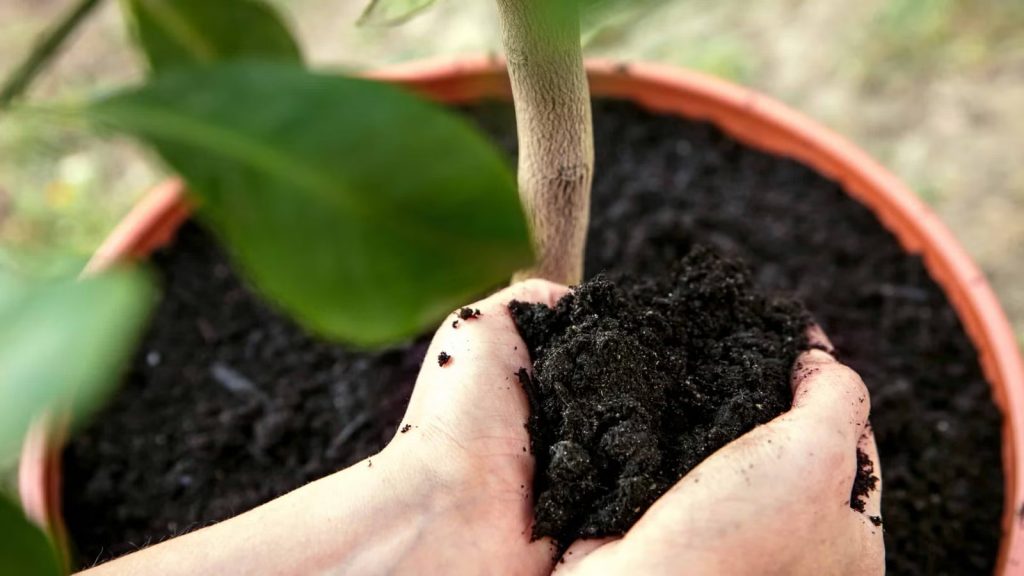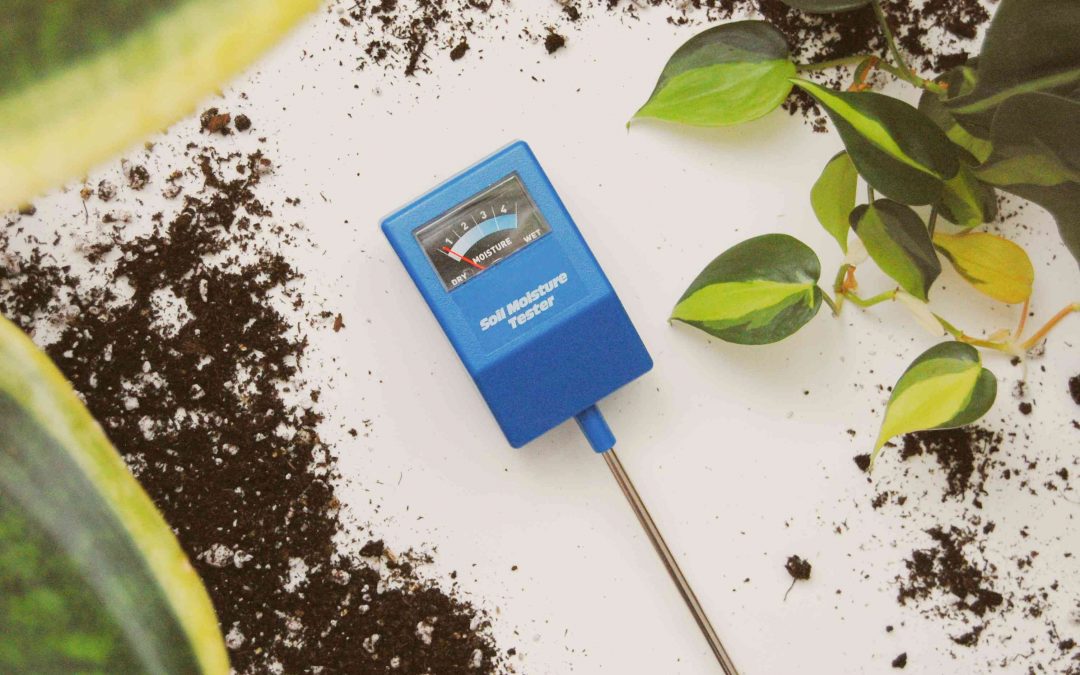Contents
- 1 Why Your Indoor Plant Soil Smells Bad (And How to Fix It)
- 1.1 What Causes Indoor Plant Soil to Smell Bad
- 1.2 1. Check for Drainage Problems
- 1.3 2. Let the Soil Dry Out Properly
- 1.4 3. Remove Rotting Material
- 1.5 4. Improve Air Circulation
- 1.6 5. Eliminate Mold or Fungus Growth
- 1.7 6. Refresh or Replace Old Soil
- 1.8 Related Articles
- 1.9 Final Thoughts on Fixing Smelly Indoor Plant Soil
- 2 Prevent Mold and Fungus in Indoor Soil
Why Your Indoor Plant Soil Smells Bad (And How to Fix It)
If you’ve noticed a strange smell coming from your houseplants, you’re not alone. Foul or sour-smelling soil is one of the most common (and unpleasant) indoor gardening problems.
Luckily, it’s also one of the easiest to fix — once you know what’s causing it. Let’s explore why indoor plant soil starts to smell bad, what it means for your plant’s health, and how to freshen it up quickly.
What Causes Indoor Plant Soil to Smell Bad
Healthy soil should smell earthy and mild — not sour, rotten, or musty. If there’s an unpleasant odor, it usually means your soil has gone anaerobic (lacking oxygen) or contains decaying material.
The main culprits include:
Overwatering: Traps moisture, suffocating roots and soil microbes.
Poor drainage: Prevents airflow, causing stagnant, sour soil.
Decomposing roots: Dead roots or organic debris breaking down emit foul smells.
Mold or bacteria: Thrives in constantly wet environments.
Old potting soil: Compacts over time, losing aeration and inviting bacteria.

1. Check for Drainage Problems
The most common reason for smelly soil is poor drainage. If water can’t escape, it pools around the roots and creates the perfect environment for anaerobic bacteria.
How to fix it:
Make sure your pot has drainage holes.
Add a layer of pebbles or coarse perlite at the bottom to improve flow.
Use a light, airy mix designed for indoor plants.
If your pot doesn’t have holes, transfer your plant to one that does — it’s the simplest and most effective fix.
Products like the Miracle-Gro Indoor Potting Mix on Amazon are formulated for airflow and moisture balance, helping prevent sour soil from returning.
2. Let the Soil Dry Out Properly
Constant moisture causes odor and root damage. Give your plant time to breathe by allowing the top few inches of soil to dry before watering again.
To help it dry faster:
Move the plant to a brighter, warmer location temporarily.
Gently loosen the soil surface to allow air in.
Stop misting or covering the soil until the smell fades.
If the soil stays soggy for days, consider removing the plant, trimming damaged roots, and repotting it in fresh mix.
3. Remove Rotting Material
If the smell is especially strong, dig a few inches into the soil — you may find rotting roots or organic matter.
How to fix it:
- Remove the plant from the pot carefully.
- Trim away soft, brown, or mushy roots with clean scissors.
- Discard the old soil completely.
- Wash the pot with warm, soapy water before reusing it.
- Repot the plant in clean, well-draining soil.
💡 Pro Tip: Always sterilize your tools before pruning to avoid spreading bacteria or fungus.
4. Improve Air Circulation
Stagnant air encourages mold and mildew, both of which can cause unpleasant smells. Increasing airflow around your plants helps the soil dry more evenly.
Try these simple methods:
Open windows regularly for fresh air.
Space out your plants — don’t overcrowd shelves.
Use a small circulating fan on low speed for a few hours daily.
The Honeywell TurboForce Table Fan on Amazon is quiet, energy-efficient, and ideal for improving air movement in plant-heavy rooms.
5. Eliminate Mold or Fungus Growth
If the smell is musty or earthy, there’s a good chance mold is growing on the soil surface. While it’s usually harmless, it can indicate poor air or water management.
How to clean it up:
Scoop off the top layer of moldy soil.
Let the pot dry thoroughly before watering again.
Add a sprinkle of activated charcoal or cinnamon powder to the surface — both help neutralize odors naturally.
For future prevention, water in the morning so the soil dries by night.
You can read more about mold prevention on The Spruce’s guide to healthy houseplant soil.
6. Refresh or Replace Old Soil
If your plant has been in the same pot for over a year, it’s time to refresh the mix. Old soil becomes compacted, reducing oxygen flow and creating anaerobic pockets where bacteria thrive.
Steps to refresh:
- Remove one-third of the top layer of soil.
- Replace it with fresh, nutrient-rich mix.
- Add perlite or orchid bark for extra aeration.
If the smell persists, repot completely. The Espoma Organic Potting Mix on Amazon is a reliable option that supports healthy root development and neutralizes odors naturally.
Related Articles
- Prevent Mold and Fungus in Indoor Soil
- How to Improve Indoor Plant Drainage
- How to Keep Indoor Plants Alive During Winter
Final Thoughts on Fixing Smelly Indoor Plant Soil
A bad smell from your plant’s soil is a clear sign something’s off — but it’s almost always reversible. By improving drainage, letting soil dry properly, and replacing old or compacted mix, you’ll restore freshness and prevent root damage.
With just a few adjustments, your plants will thrive again — and your home will smell clean and natural once more.
Keep Your Soil Fresh and Healthy
Prevent Mold and Fungus in Indoor Soil
Refresh your plant’s soil with a light, airy mix and better drainage.

